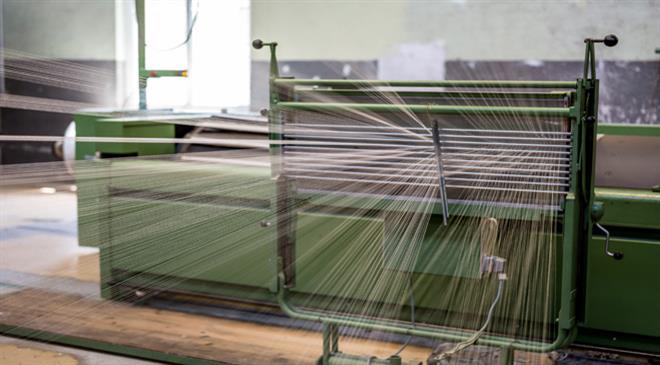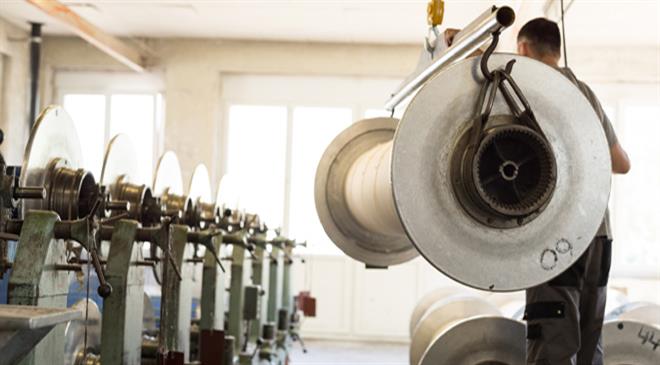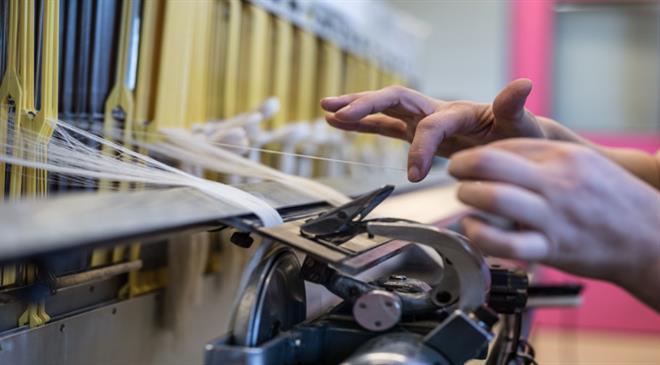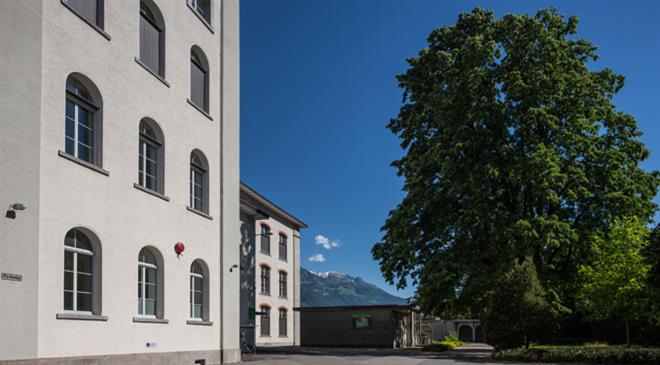TT: How was Ventile fabric created? Give us some background.
Ventile fabric was first developed by scientists at the Shirley Institute in Manchester. Originally created to help save the lives of air force pilots flying over the Atlantic during war, the fabric was designed to be cool and comfortable on land, yet warm and impenetrable if it came into contact with water. From here, Ventile began to carve out a reputation as the world's most effective, natural, all-weather cotton textile.
TT: What is the durability of the fabric? How long can a garment made from Ventile last?
Ventile is extremely durable and a garment made from it can last for years. The fully twisted yarns and dense weaving production process of Ventile fabric give it its unique durability, proving the best results for cotton on the market. The durability of our fabric means we embrace the slow fashion movement and customers frequently send us pictures of Ventile jackets they have had for decades. To play to our strengths and to encourage Ventile wearers to celebrate the longevity of the fabric and their garments, we launched a campaign called 'Join the movement. Love the environment. Choose slow fashion' this year.
TT: Ventile has a long-standing history of providing super quality weather-proof fabrics. What changes in fabric quality have you brought through the years?
We are proud of our history and heritage and continue to produce fabrics that maintain our core fabric integrity. We have made limited changes to the successful core fabric manufacturing process and textile structure throughout the years. We have invested in modern weaving, looming and dyeing processes to improve the overall optical appearance of the fabric and in recent years, we expanded our product range with the addition of organic and recycled Ventile fabric options, which have been warmly welcomed by our customers.

TT: Where is the special type of extra-long staple cotton that goes into making the Ventile fabric grown around the world?
To ensure the best quality fabric, Ventile sources raw materials individually for each fabric category using suppliers around the world from America to Egypt and Asia.

TT: Where is the Ventile fabric manufacturing plant located? What is its annual production capacity?
Ventile went into mass production in 1943, woven by Talbot Weaving of Chorley, Manchester, England. In the 1980s, the dyeing houses of the North West started to go out of business. Talbot Weaving, the owners of Ventile, were no longer able to dye and finish Ventile fabrics in the United Kingdom. Known for its high manufacturing standards, Switzerland was selected as the country of choice for the final finishing of the loom-state fabric. Today, Ventile is woven, dyed and finished to strict quality and production guidelines in mills on the outskirts of Zurich.
TT: Which are your major markets? Who are your main customers?
Ventile fabric is exported globally for use in the outdoor and fashion industries. With our strong British heritage, we have a significant presence in the UK and European markets working directly with designers and design teams, including Nigel Caborn, Purdy and Private White. Our fabric is particularly sought after by designers looking to develop high-quality, outerwear pieces and accessories.
TT: You recently unveiled the Ventile recycled cotton fabric variety. Have you started retailing it yet?
We are very excited about the development of our Ventile Eco recycled cotton fabric this year. The new addition has proved extremely popular with our customers with one Swedish brand fast-tracking production to develop shoes and rucksacks using the fabric. We are also working with brands looking to use the new recycled fabric in their 2020 collections.
TT: What are the major differences between organic and inorganic Ventile?
All Ventile cotton is created from the world's highest grade, extra-long-staple cotton fibres over 36 mm in length. Ventile chooses only the very best of the world's cotton crop, from that just 2 per cent makes the grade and goes into making Ventile original. A further 0.04 per cent of this is used to make Ventile Organic Cotton producing premium fabrics to rigorous organic standards, with the main focus being on avoidance of non-organic materials in the production process. The Ventile Organic Cotton fabric is certified by GOTS. Interest and demand for organic options from global retail markets and consumers are growing, and this has resulted in a 115 per cent growth in sales of Ventile organic cotton fabric over the past three-year period (2015-2018), our largest ever reported.
TT: What are the major application areas of Ventile (both organic and in organic varieties)?
Historically, we worked with the British Army and other air forces to develop military uniforms made from Ventile. Today we supply Ventile fabric to a range of customers from outdoor performance garment manufacturers to high fashion clothing and accessory brands. Designers and manufacturers use Ventile across their collections, making anything from heavyweight shirts to jackets and accessories. We have also collaborated with designers to use the fabric for shoes, watch straps, bags and there has even been interest from an equestrian brand looking to produce horse jackets in Ventile.

TT: How do you manufacture fabrics from recycled cotton? What is the process of procuring raw materials?
Ventile recycled cotton fabric is made from pre-consumer cotton; textile waste that is leftover from fabric production. The raw fabric offcuts are sorted and then shredded down to fine fibres. These fibres are then spun into new yarns which are woven into Ventile fabric followed by the traditional Ventile dyeing and finishing processes. Using Ventile pre-consumer cotton maintains stable cotton fabric integrity. Our fabric is made from 100 per cent recycled cotton fabrics, which is rare in the market where many use a blended fibre approach.

TT: What new fabric technologies you are working on at the moment?
Our product team is currently working on a number of developments, one of which is a new lighter weight, 100 per cent recycled cotton fabric, perfect for lighter jackets and shirts. This development is in response to the positive customer reaction to the launch of Ventile Eco this year.
TT: How is Ventile different from similar dense-weave cotton fabrics? What is its USP?
Ventile fabric is created using only highest-grade cotton crop. The cotton fibres are picked, sorted and carefully spun into an even, uniform yarn. High precision spinning results in a streamlined yarn, which is essential for giving Ventile its unique waterproof characteristics. After spinning, the yarn is then doubled to increase its durability and abrasion resistance. With such a dense yarn, Ventile is one of the very few companies with the technology and knowhow to dye and finish such tricky fabrics. A combination of sourcing this exclusive raw material, with the expertise of our Swiss weaver, makes Ventile the densest performance cotton fabric on the market with unmatched breathability.
TT: What are your future plans?
We have expanded our team this year appointing a new European sales manager to support our on-going worldwide expansion across the UK, Europe, America and Asia to meet our business target of 20 per cent growth. We have a proud history of producing innovative fabrics that perform in and protect from the elements. We are committed to continuing this and investing in sustainable fabric alternatives for designers worldwide. (PC)



